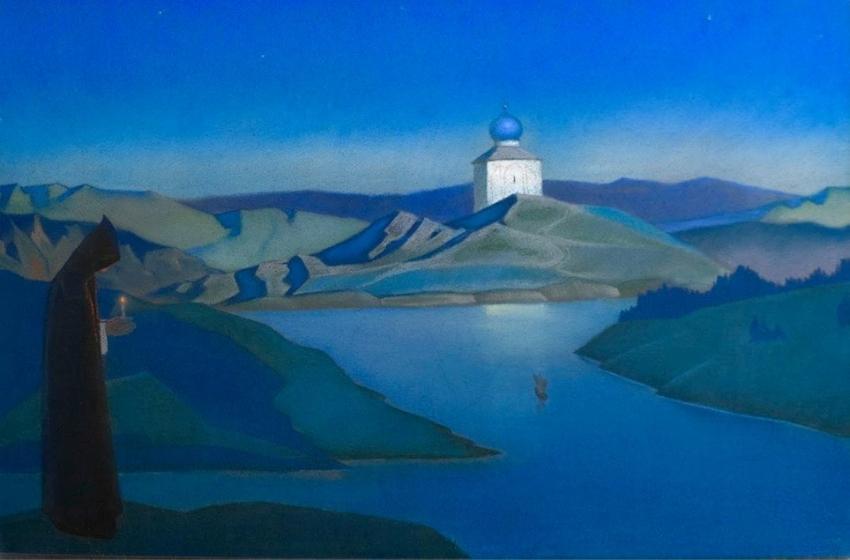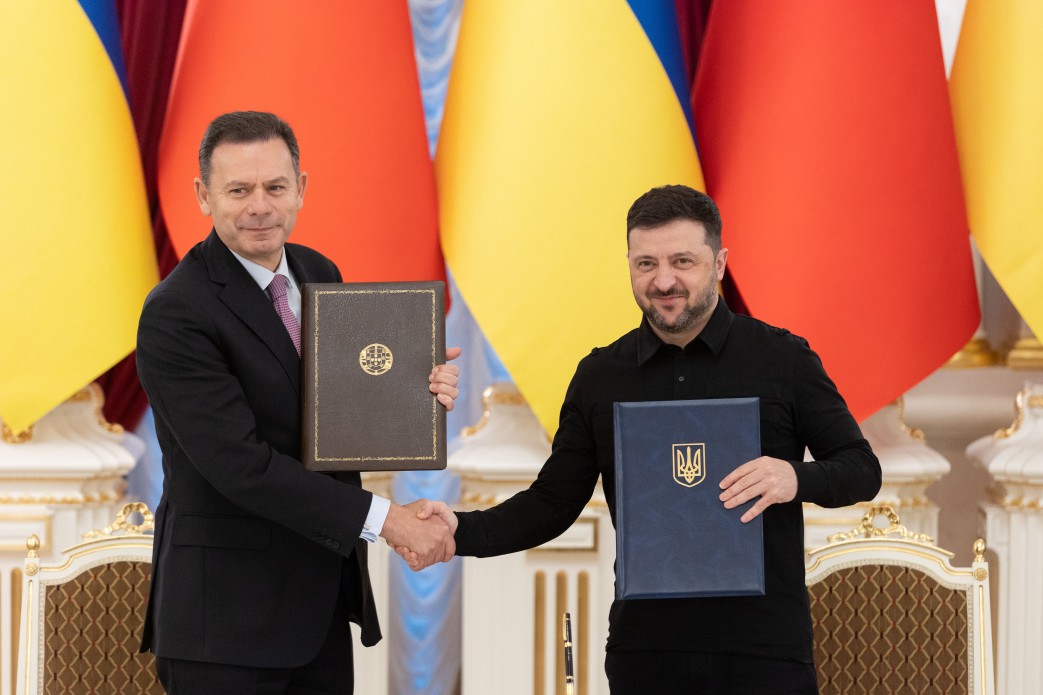The founder of the Odessa Roerich House Museum, Helena Petrenko, a doctor and Roerichologist, developed a project for space exposition. The initial collection of the Museum consisted of paintings, sketches, archival materials: manuscripts of memories of the Roerich family, diaries, letters, rare photographs donated by the artist B. A. Smirnov-Rusetskiy to Helena Petrenko.
On March 10th, 2000, the Public House-Museum named after Nicholas Roerich was opened in Odessa, one of the twelve museums in the world dedicated to the outstanding artist Nicholas Roerich, and the only Nicholas Roerich museum in Ukraine.
The first Nicholas Roerich Museum was opened in New York in 1923. Subsequently, the Roerich Museums and Art Galleries were established in many countries around the world. The Museum was founded by the Odessa Roerich Pact Committee, which, on February 14th, 2004, celebrated its 14th anniversary, and the South Ukrainian Charitable Fund named after Nicholas Roerich.
The concept of the exposition and activities of the Odessa Roerich House-Museum is in line with Nicholas Roerich’s view of the Museum:
People pronounce the word ‘Museum’ but don’t realise the idea, that the Museum is a ‘Mouseion,’ in Greek, the House of Muses. The abode of all the Muses is, above all, the symbol of the Unification.
Nicholas Roerich
The main task of the House-Museum is the scientific comprehensive study and dissemination of the creative heritage of the entire Roerich family: the world-famous painter Nicholas (Nikolai Konstantinovich) Roerich (1874-1947), philosopher Helena (Elena Ivanovna) Roerich (1879-1955), the wife of Nicholas Roerich, their sons - an orientalist George (Yuri Nikolaevich) Roerich (1902-1960) and painter Svyatoslav (Svyatoslav Nikolaevich) Roerich (1904-1993).
In this article we will describe top ten the most valuable exhibits of the museum. We highly recommend to visit the museum in the nearest future and see everything with your own eyes.

1. Boris Smirnov-Rusetsky. Portrait of N.K. Roerich. The artist was a student of Nicholas Roerich, worked in pastel and gouache techniques. The museum contains several of his paintings, which he donated to the citizens of Odessa.
2. Boris Smirnov-Rusetsky. "Silver Kingdom".
Boris Alekseevich Smirnov-Rusetsky was familiar, at different periods of his life he met and corresponded with all members of the Roerich family. In 1941, he was arrested with confiscation of the archive for communication with N.K. Roerich and sentenced to 10 years in prison, after the expiration of the camp term he was sentenced to exile for 5 years in the Akmola region.
3. Boris Smirnov-Rusetsky. "Winter sun".
All his life Boris Alekseevich kept in his memory the memories of all members of the Roerich family. In 1993, the memoirs were finished in rough, but the artist did not manage to publish them. The manuscript was given to Elena Grigorievna Petrenko, director of the Odessa House-Museum named after N.K. Roerich, the widow of Smirnov-Rusetsky, Vera Yasnopolskaya.
4. Indian icon pichvai, the original of the traditional icon of India on canvas, depicting the god Krishna in the form of a shepherd.
Pichwai or ‘pichvai’ form of paintings are one of the spectacular and ancient forms of art that have their origin in India, the land of culture. Having their roots in Nathdwara Rajasthan, pichwai (pichvai) , the Indian traditional painting, is a stunning art form that has existed for over 400 years. The stunning art form is a 400-year-old art one which was created depicting the beautiful life of Krishna.

5. "Tara Green, surrounded by teachers." Tibet, XIX century. This is a traditional thangka - a Tibetan religious image made with glue paints or printed on silk.
Tara is an important figure in Buddhism, especially revered in Tibetan Buddhism. She is known as the "mother of liberation", and represents the virtues of success in work and achievements. As Green Tara she offers succor and protection from all the unfortunate circumstances one can encounter within the samsaric world.

6. Buddhist stupa with attachments of Buddha Shakyamuni.
Shakyamuni Buddha is the founder of the Buddhist religion. He lived and taught in India in the sixth century B.C.E., a time of burgeoning religious and philosophical thought from Greece to China. Born as the crown prince of the great Shakya Kingdom, the young Siddhartha Gautama was groomed to be a king in accordance with the wishes of his royal father. However, when he was about 29 years old, he learned of the deep suffering experienced in life by people. He left his palace life, gave up his fine garments and jewelry in order to find the causes of this suffering and the means to overcome it.

1898
7. The visiting card of Nicholas Roerich.
8. Letter from Nicholas Roerich to Joseph Earl Schrack dated September 24, 1931 (from the archives of the Odessa House-Museum named after Nicholas Roerich).
Joseph Earl Schrack was director of the art school at the Nicholas Roerich Museum 1930 - 1935. He worked in many media: Illustrations for magazines and books in black and white pen and ink, color canvases of abstracts, landscapes, and portraits, in pencil and oil, using brush and pallet knife. In all, he produced over 5,000 works of art.

Right: Yuri and Nicholas Roerich. 1924
9. Rare editions and a portrait of John of Kronstadt in the window of the Odessa House-Museum. N.K. Roerich.
John of Kronstadt was a Russian Orthodox archpriest and a member of the Most Holy Synod of the Russian Orthodox Church. He was known for his mass confessions, numerous miracles, charitable work but also for his monarchistic, chauvinistic, antisemitic and anti-communist views.
10. Rare exhibits of the Odessa House-Museum. N.K. Roerich.




















